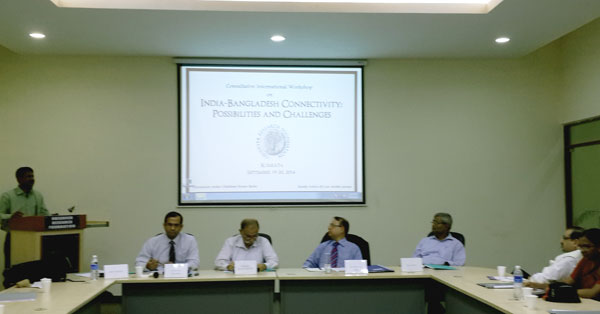Bangladesh-India trade relationship can be better handled through market-based approach, keeping in mind changing perspectives, demand of new generations and ethnic, linguistic and cultural commonalities on both sides.
Both countries need to narrow down the differences in the priorities of the debated issues to achieve a win-win solution, noted Dr Khondaker Golam Moazzem, Additional Research Director, CPD while addressing a consultative workshop on “The India-Bangladesh Connectivity: Possibilities and Challenges.”
The two-day workshop, organised by the Observer Research Foundation (ORF) during 19-20 September 2014 in Kolkata, India, sought to assess the benefits and adverse impact of India-Bangladesh cross-border connectivity.
The workshop underscored that geographical locations of India and Bangladesh complement each other and present an opportunity for both to further develop their interconnectivity and economies. Bangladesh, home to approximately 160 million people with a consistently growing economy between five and six percent, is an important neighbour of India. It is indeed true that, land connectivity with India’s Northeast and its access to Southeast Asia through India’s Northeast may help the country to achieve its ambition to reach lower-middle income level by 2021. Being India’s largest trading partner in the region, Bangladesh cannot ignore this opportunity.
Divided into four business sessions focusing on rail and road connectivity, connectivity through water ways, possibilities in energy trade, issues and challenges in border management including border trade, the workshop deliberated on queries on the main impediments that have affected development of rail, road, and water connectivity and ways in which structural changes will bridge the gap in the near future. If India and Bangladesh manage to follow through on promises to open up their economies for transit and trade as set out in a memorandum of January 2010, a new era could dawn across the land borders.




